Even if you don’t have much experience with chemistry, you likely know a bit about the differences between acids and bases. Acidic substances, like lemon juice or black coffee, have a higher concentration of hydrogen ions than pure water and therefore have a pH below seven. Alkaline substances, like bleach and baking soda, on the other hand, have a lower concentration of hydrogen ions than water and a pH above seven. While it might seem like this knowledge doesn’t have many applications outside of the classroom, it can actually be incredibly helpful when gardening. Some plants prefer more basic soil, so adding a bit of baking soda can increase the pH and create a more ideal environment for what you’re growing.
The best way to determine if your soil is acidic or alkaline is by utilizing test strips, but you can also perform a simple DIY test if you’re in a pinch. Take a sample of soil, then completely saturate it with water until it’s muddy. Divide this in half, then pour vinegar into one sample and baking soda into the other. If it reacts to the vinegar, it’s alkaline, and if it reacts to the baking soda, it’s acidic. Counteract alkalinity with this gardening hack that uses lemons, or make the mix more alkaline by sprinkling baking soda over the top of the soil.
Plants in the cabbage family
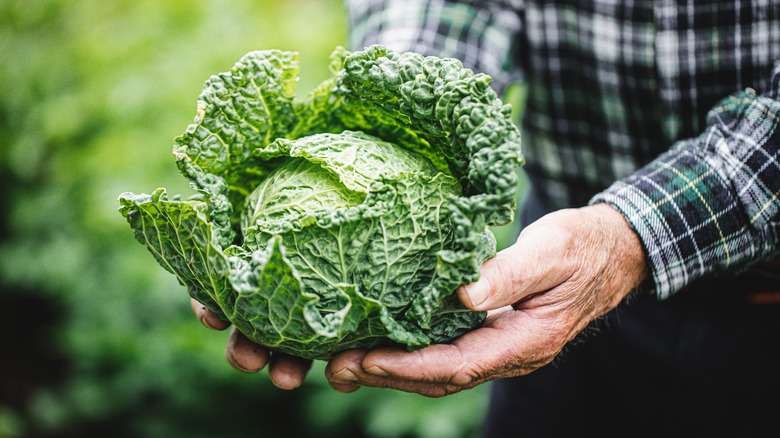
Plants in the cabbage family can grow both in slightly acidic and slightly alkaline soil mixes, but a more alkaline soil mix can help prevent and cure a disease that is known as clubroot. Instead of forming a normal root system, the roots of infected plants will grow large and thick, either killing the plants or reducing the yield. If you notice this issue developing in the garden, your broccoli, cabbage, Brussels sprouts, kale, radishes, and anything else in the Brassicaceae family could benefit from some baking soda.
Peas
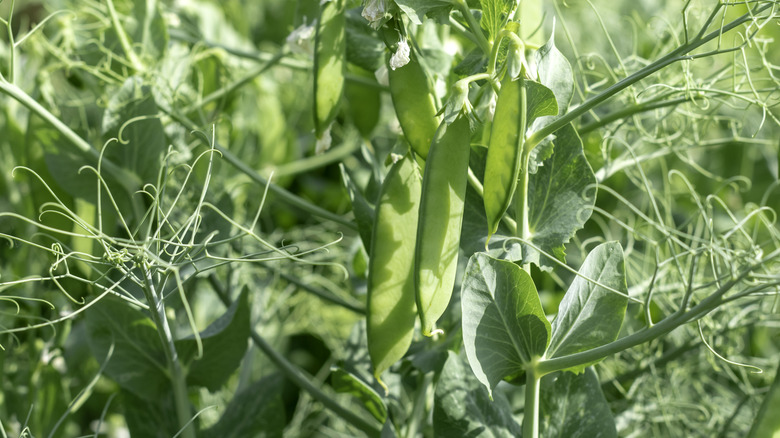
Peas are a great plant to cultivate if you live in a colder climate and need something that thrives in chilly conditions, but they’re also great if you’re working with more alkaline soil. As with most plants that prefer alkaline soil, this mix shouldn’t veer into extreme levels. Further alkalizing an already-basic soil mix can damage and even kill your crops, but using a bit of baking soda to take your mix from an acidic pH to something around 7 to 7.5 can ensure that you have a fruitful harvest of podded peas, sugar snap peas, or snow peas.
Asparagus
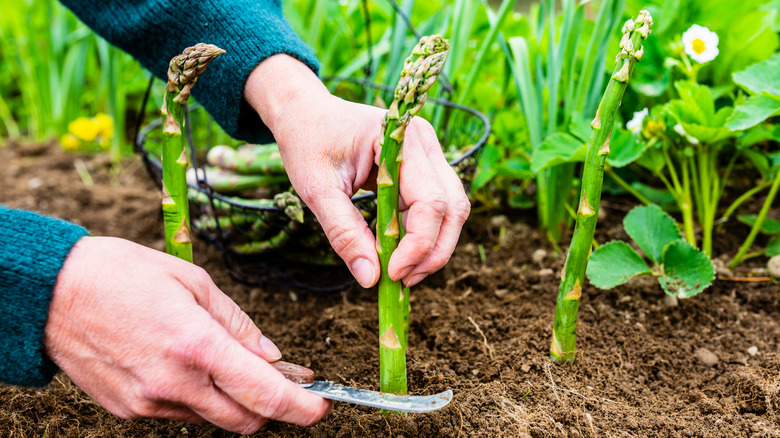
iMarzi/Shutterstock
Asparagus is considered one of the hallmark foods of an alkaline diet, so it’s no surprise that the plant will thrive in more alkaline soil conditions. Plant your asparagus in soil that has a pH of 6.5 to 8 to guarantee that you won’t face any issues that could compromise your crop. Soil that is too acidic can negatively affect asparagus, even if it’s the ideal situation for more acid-loving plants like your blueberry bushes, so sprinkle a bit of baking soda around your plants if you need to neutralize existing acid levels and raise the soil’s pH.
Leeks
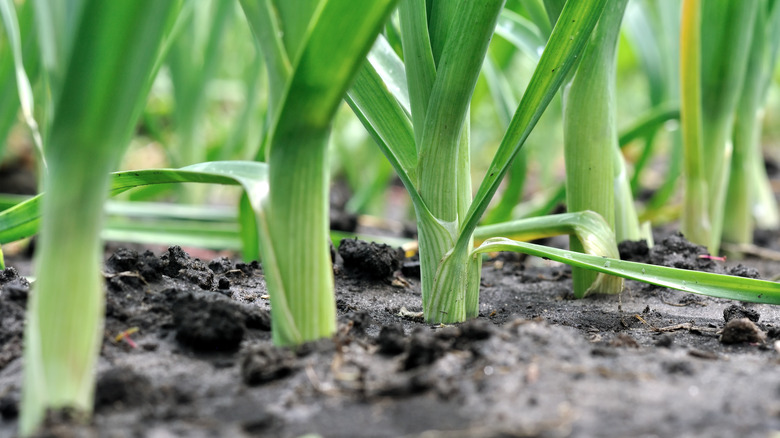
Yuriys/Getty Images
Most members of the onion family prefer soil that is slightly acidic, but leeks, on the other hand, are much more accepting of soil that has a pH level from neutral to alkaline. Because of this, they can benefit from a bit of baking soda sprinkled near the root of the plant, especially if you’re attempting to grow them in the same soil as onion, garlic, and shallots. These plants’ familial relationship might give them a similar flavor profile and application in cooking, but ensuring a fruitful harvest might mean slight adjustments to their individual growing conditions.
Thyme
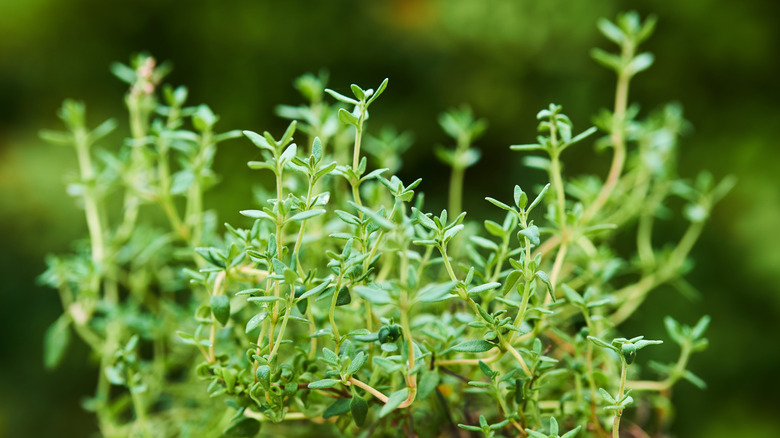
Jan Mach/Getty Images
Thyme is one of the most popular herbs to grow both outdoors as an ornamental plant or specifically to harvest and use in cooking, but it has a slightly different soil preference than some other common herbs, like basil and mint. Most plants will thrive in neutral soil, thyme included, but it prefers a range on the more alkaline side of the pH scale rather than acidic. Sprinkle some baking soda into the soil if you notice the pH level is too low to adjust these levels and give your plant a better chance of producing healthy, lush foliage.
Lavender
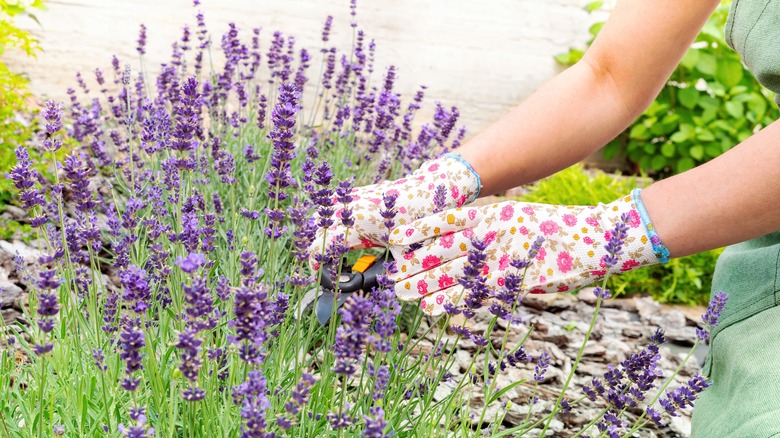
nieriss/Shutterstock
Lavender, along with many other plants that were originally cultivated in Mediterranean regions, thrives in neutral to alkaline, well-draining soil. A pH level of 6.5 to 8 is ideal, so, if you find that your soil is too acidic, a dusting of baking soda can bring up that level without requiring an extra trip to the garden supply store. If you ensure that your soil is at the correct pH level and doesn’t easily become waterlogged, you should be left with the perfect conditions to grow this fragrant, useful, and beautifully-colored plant in your garden.
Lily of the Valley
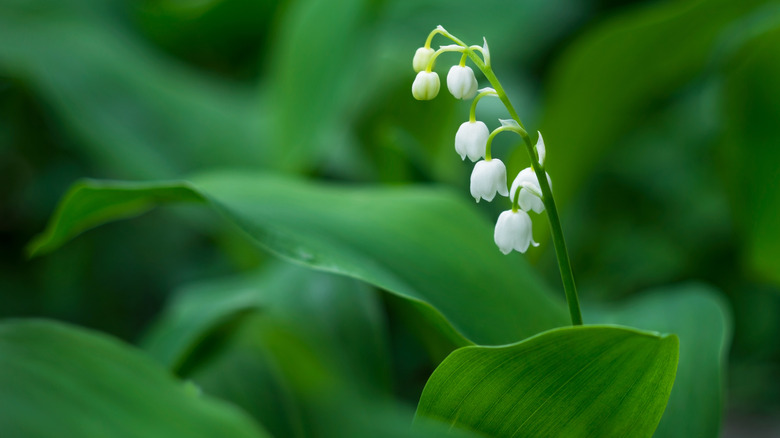
Laszlo Szelenczey/Shutterstock
Lily of the valley has a tendency to take over gardens and can pose risks to children and animals that might mistake its berries for something edible, but it’s still a beautiful flower that can be cultivated at home responsibly. Lily of the valley, surprisingly, is part of the same family as asparagus, so the soil needs of these two plants are fairly similar. It does well in neutral to alkaline soil, so don’t be afraid to use baking soda to help perfect the pH level of your mix.
Hydrangea
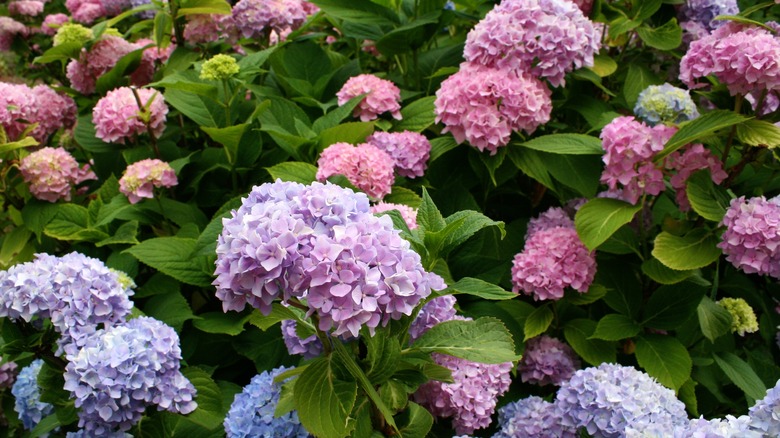
Natalka De/Shutterstock
Unlike most of the other plants on this list, the kind of soil your hydrangeas should be planted in is entirely dependent on your desired final look. The pH level of hydrangea’s soil affects the level of iron that the plant can absorb, which alters the color of the bloom. If you prefer bright blue flowers, a more acidic formula is your best bet, but if you want them to stay pink, make the mix more alkaline. Baking soda can help you create the color — or mix of colors — you want on your bush.
Osmanthus
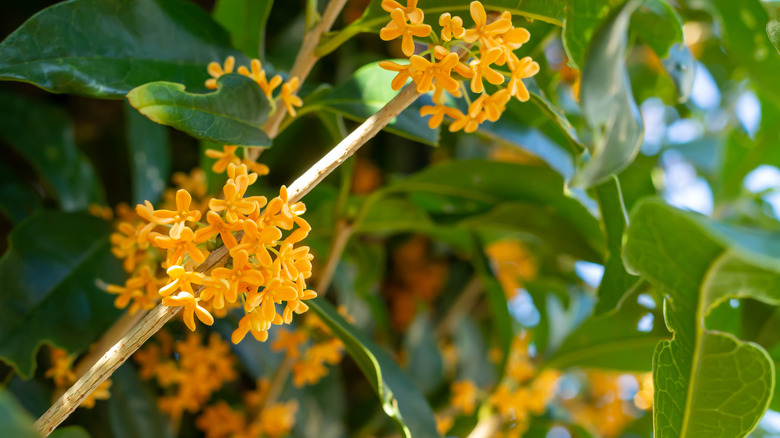
C11yg/Getty Images
Sweet osmanthus is an incredibly durable shrub that produces pleasant-smelling, orange blooms. It can tolerate extremes in weather, does well in a variety of different sunlight levels, and is even drought-resistant, so it’s understandably not too picky about the specifics of the soil, either. If you do want to guarantee your osmanthus is in its ideal setting and has the highest chance of producing branches covered in vibrant and full blooms, however, it does well in neutral to alkaline soil mixes and can benefit from a sprinkle of baking soda if the soil is too acidic.
Forsythia
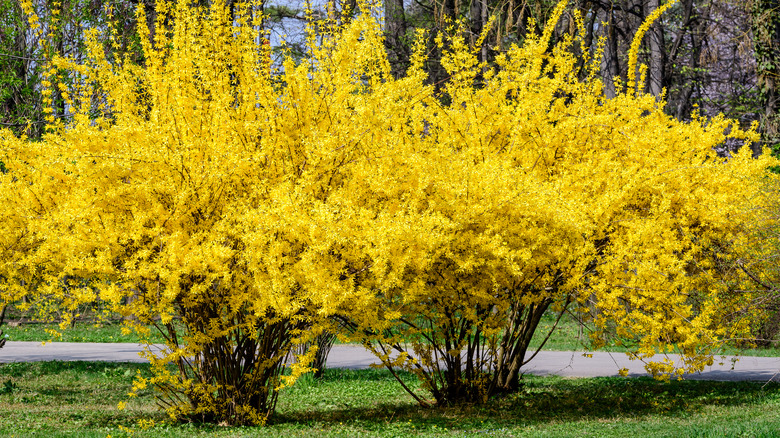
Cristina Ionescu/Shutterstock
Forsythia is another beautiful plant that can do well in a variety of somewhat unfavorable conditions and is especially popular in chillier regions of the northern United States thanks to its hardiness and ability to last through freezes and cold winds. They’re also a great choice if you’re looking to attract more pollinators to your garden, especially because they bloom earlier in the year than many other flowering plants. They prefer soil that’s neutral to alkaline, so if your garden is leaning acidic, consider breaking out the baking soda before planting.
Lilac
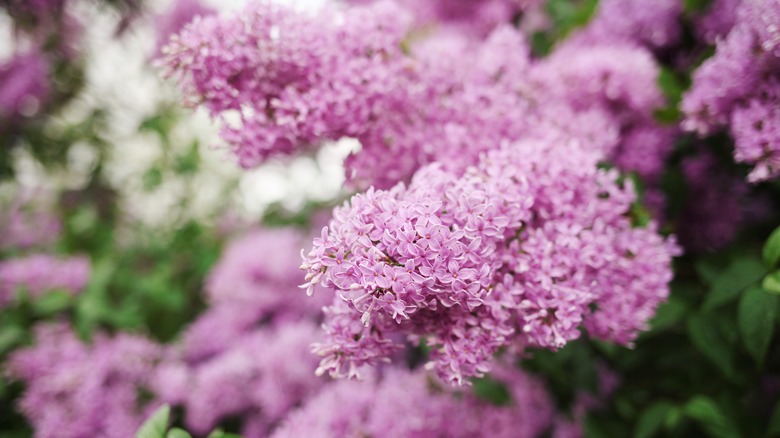
Kseniia Perminova/Shutterstock
Lilacs are popular thanks to their beautiful, full blooms and sweet fragrance, and their general hardiness makes them a good choice for colder areas that might be too chilly for other florals. They’re also a great option if your area has alkaline soil or if you’re altering your soil to ensure your other plants thrive. They’ll do well in neutral soil conditions like most other plants, but soil that leans too acidic can kill them and cause their flowers to droop and wilt, so, if you find yourself in this situation, consider increasing the pH with baking soda.
Oregano
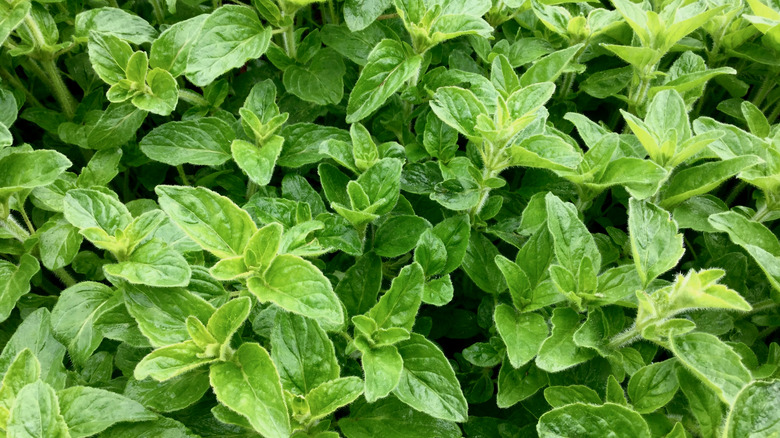
Svetlanko/Shutterstock
Oregano, also known as wild marjoram, is one of the most common herbs to grow at home, but it will thrive in a more alkaline environment rather than in soil that’s on the acidic side. Raising the pH levels of the soil with a sprinkle of baking soda can help to balance out any acidity, and, when you pair this with the appropriately dry soil and full sun oregano needs to thrive, you’ll be left with a plant that will give you all the leaves necessary to flavor your favorite culinary creations, from marinara sauce to herbal cocktails.



